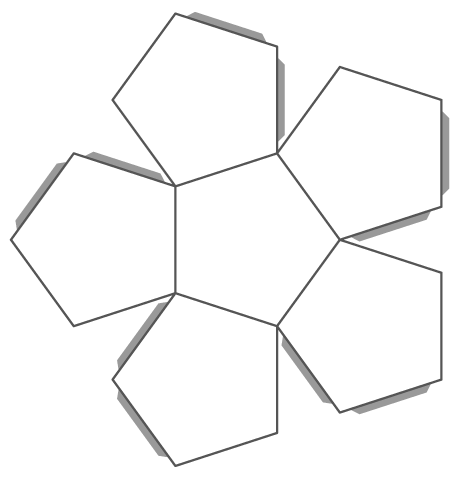
Paper models:
Click on the following links to obtain templates for making paper models of the regular polyhdra.
To use the templates, print the images, and then
copy them onto heavy card stock (about 60 lb stock) with as much
magnification as seems suitable. The dodecahedron and icosahedron
patterns come in two parts -- top and bottom. Be sure to use exaxtly
the same magnification for the two parts. Cut around the figures with
a utility knife or sharp scissors, score and fold at the construction
lines, and use the gray glue-tabs for gluing the figures. Use slow
drying glue (Elmer's for example) to allow sufficient time to adjust
the alignment of the figures before the glue dries.

Tetrahedron
Stick models:
Here is a method to construct stick models of the regular polyhedra: Obtain a length of plastic laboratory tubing and cut it into 3/8 inch sausages. Use the sausages to make hubs for your model, using an awl to make an appropriate number of holes in each hub. For example, to make a regular tetrahedron, you need 4 hubs, each with 3 holes, more or less equally spaced. You can try various materials for the edges, for example, wooden skewers (from the grocery store), or thin medal rods cut to equal lengths.
The polyhedra with triangular faces are rigid. The flex in the plastic hubs will allow the edges to assume the correct angles.
The cube and the dodecahedron, however, are not rigid, and the flexible hubs will allow your structure to deform. You can "correct" this "problem" by stellating the dodecahedron and cube. For example, for the dodecahedron, prepare, for each of the 12 faces, a new hub with five spokes, and insert the five spokes into the five hubs at the vertices of the petagonal face. The resulting structure will have 12*5 = 70 triangular faces andwill be rigid.